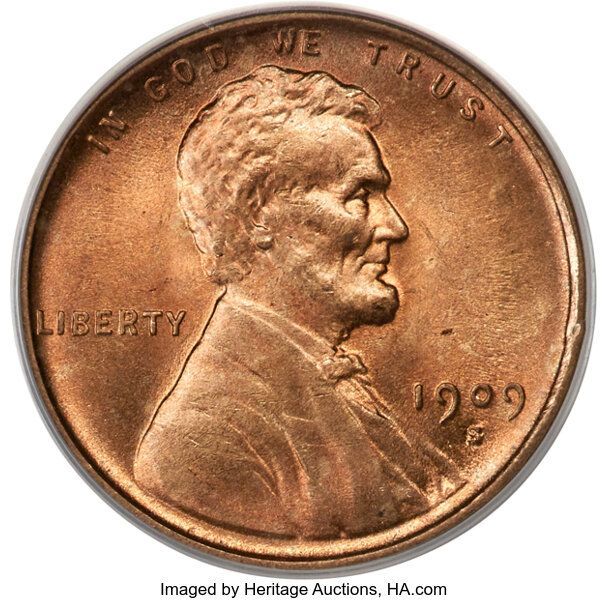Ad
Ever bent down to pick up a penny and thought, Why do I even bother? Well, soon you won’t have to. The U.S. is finally pulling the plug on the penny, and yep, it’s kind of a big deal.
Now maybe you're feeling a weird mix of good riddance and hey, wait a minute. Like, sure, it’s just a copper colored coin that costs more to make than it’s worth, but it’s also been jingling in your pocket since you were a kid.
You might be thinking, What about exact change? What about those penny jars? Isn’t this just another step toward everything getting more expensive? Totally fair questions. You're not crazy for feeling a little conflicted. This isn't just about money, it's about memory, nostalgia, and a creeping feeling that the little things are slipping away.
But here's the thing: this move says more about the economy, policy, and the psychology of value than it does about one tiny coin. And understanding why the penny's getting the axe? That’s where it gets interesting.
So if you're curious, a little skeptical, or just here for the tea, you're in the right place. Let’s dig into the real story behind the penny’s slow goodbye. Let’s begin.
Why Now? The Economics Behind the Decision
It’s simple math, really. Each penny costs about 3.7 cents to produce. That means the government loses money. Every. Single. Time. Just by making it!
Multiply that over billions of coins, and it adds up fast. In 2024 alone, the U.S. Mint lost roughly $85 million just churning out 3.2 billion of these little copper colored coins.
That’s not just wasteful. It’s kind of surreal. We're spending millions to make something we all agree isn't even worth picking up off the ground.
Now here’s where it gets more interesting. About 60% of coins already in circulation aren’t even circulating. They’re holed up in drawers, jars, cars, and couch cushions. They’re idle, doing nothing. That’s about $14 billion in frozen value, just sitting around like forgotten treasure.
And every year, $68 million worth of coins are literally tossed out. Gone. In the trash. Down the drain. That’s not just bad economics, it’s absurd.
So why now? Because continuing to mint pennies in 2025 feels like mailing VHS tapes in a streaming world. The writing’s on the wall, and the numbers don’t lie.
Timeline & Process of Phase-Out
The wheels are already turning. The U.S. Treasury placed its final order for penny blanks in late spring 2025. Once those blanks run out, expected sometime in early 2026, that’s it. The presses stop. No more pennies rolling off the line.
But here’s the twist: the Treasury can stop making the coin, but it can’t say the penny’s dead. Only Congress can pull its legal tender status. That means pennies will still be technically spendable. They’ll still work. But like old concert tees or VHS tapes, they’ll slowly fade into irrelevance.
It’s not the first time this has come up. The idea of ditching the penny has had bipartisan backing for years. Presidents from both parties, Obama and Trump have supported it. Lawmakers have even introduced legislation with cheeky names like the Common Cents Act and Make Sense Not Cents Act.
The debate has always been simmering. But now? Now it’s boiling over.
What This Means in Your Pocket
Let’s get practical. What happens when you walk into a store with cash?
Retailers will round. Up or down. Just like Canada, Australia, and New Zealand already do. If your total is $10.02, you’ll pay $10.00. If it’s $10.03, it’ll round up to $10.05. No calculator necessary. No pennies needed.
Digital payments? They’ll stay exactly the same. You’ll still be charged $10.02, because there’s no physical coin involved. It’s just numbers on a screen.
But taxes, that’s a bit murkier. States and local governments will need to lay down clear rules on how rounding works for things like sales tax. Without guidance, it could get messy. Some jurisdictions might round each item. Others might round the total. That’s a small detail, but it matters, especially for folks who rely heavily on cash.
Still, most people probably won’t even notice a major change. It’s not about individual cents. It’s about clearing out a coin that’s outlived its usefulness.
Historical & Cultural Resonance
Let’s not pretend this is just about money. The penny is steeped in symbolism.
It was one of the first coins minted by the U.S. back in 1792. In 1909, Lincoln’s face was added to mark his 100th birthday. That made the penny the first U.S. coin to feature a real person. Honest Abe. The Great Emancipator. That’s no small thing.
And the phrases tied to the penny? They’ve lived in our heads rent-free for generations. “A penny saved is a penny earned.” “Penny for your thoughts.” “In for a penny, in for a pound.” It’s more than a coin, it’s cultural shorthand.
Piggy banks? They started with pennies. Kids counting change? Pennies were their first taste of money. For many, the penny is a memory.
Critics, of course, point out the flip side. If we’re worried about losing the penny, shouldn’t we also worry about the nickel? It costs nearly 14 cents to make a 5 cent coin. That’s a bigger loss.
But for now, the penny’s the one on the chopping block. And that stings a little more because nostalgia is hard to price.
Ad
Global Context & Precedents
The U.S. isn’t the first to do this. Not even close.
Canada said goodbye to its penny in 2013. Australia and New Zealand dropped theirs way back in the '90s. And guess what? The sky didn’t fall. People adapted. Life went on. Prices didn’t spiral out of control.
In fact, studies from those countries show something kind of wild. Once folks understand how much money their government saves, support for ditching the penny skyrockets. In the U.S., recent surveys suggest anywhere from 58% to 84% of people are on board once they see the numbers.
That might seem surprising. You’d expect more resistance. But sometimes, change feels scarier than it actually is.
And if you’re wondering how they handled it? They rounded at the register. They kept their nickels, dimes, and quarters. And they never looked back.
Potential Drawbacks & Counterarguments
Of course, not everyone’s clapping. Some folks see problems and not just sentimental ones.
Let’s start with the nickel. It’s even more expensive to produce than the penny. About 13.78 cents per coin. So if cost is the issue, why not cut both? That’s a fair question, and one that’ll probably come up again soon.
Then there’s the lobbying. Groups like Americans for Common Cents, backed by zinc suppliers, of all things, argue that killing the penny will lead to price gouging. They say retailers will round up more than down. That we’ll all end up paying a little more.
That’s not impossible. Some studies back them up. But other data says the opposite. That rounding evens out. That it’s more of a psychological fear than a real financial hit.
Still, the concern’s valid. And it hits hardest for people who rely on cash. If you're living paycheck to paycheck, every penny does count. That’s the nuance. This isn’t just a quirky economic footnote, it’s a policy change that touches real lives.
Looking Ahead
So what now?
Pennies won’t vanish overnight. They’ll slowly disappear, like spare socks or Blockbuster cards. Lost, worn down, tossed in tip jars. Eventually, you just won’t see them anymore.
Cash use is already changing. More people pay with cards, phones, even watches. For better or worse, coins are on the decline.
Legislatively, Congress will have to decide on the final steps. How should rounding be enforced? Should we still count pennies as legal tender? Should we tackle the nickel next?
There’s also talk of commemoration. Maybe a final Lincoln penny for collectors. Maybe a semiquincentennial edition in 2026. A nod to history before the curtain closes.
But the broader trend is clear. This is part of a larger shift, away from physical currency and toward streamlined, digital-first economies.
What the Penny Leaves Behind
Maybe you’re still turning this over in your mind. Maybe you’re picturing that old mason jar on the shelf half full of pennies, dusty, kind of forgotten, but oddly comforting. Maybe part of you is still thinking, Wait... are we really doing this? Are we really saying goodbye to something that’s been in our pockets, our sayings, and our savings since forever?
Yeah. It’s a strange feeling. And no, you’re not being too sentimental. This isn’t just about coins, it’s about connection. Little habits. Familiar sounds. Tiny tokens of something bigger. That’s hard to let go of, even when it makes sense.
But here’s what you do have now: clarity. You’ve got the facts. You’ve got the context. You’ve got the full story, economic, historical, emotional, all of it. You’ve seen the hidden costs, the quirky ironies, the policy battles, and the path forward. And that’s power.
You're not just watching the penny fade out, you’re understanding why it’s happening. You’re part of the moment. Part of the shift.
So take that jar of pennies. Keep a few. Let the rest go. We’re moving into something smarter, faster, cleaner. And you? You’re ahead of the curve.
Give yourself credit.
You made cents of it all.
Ad

Ad
